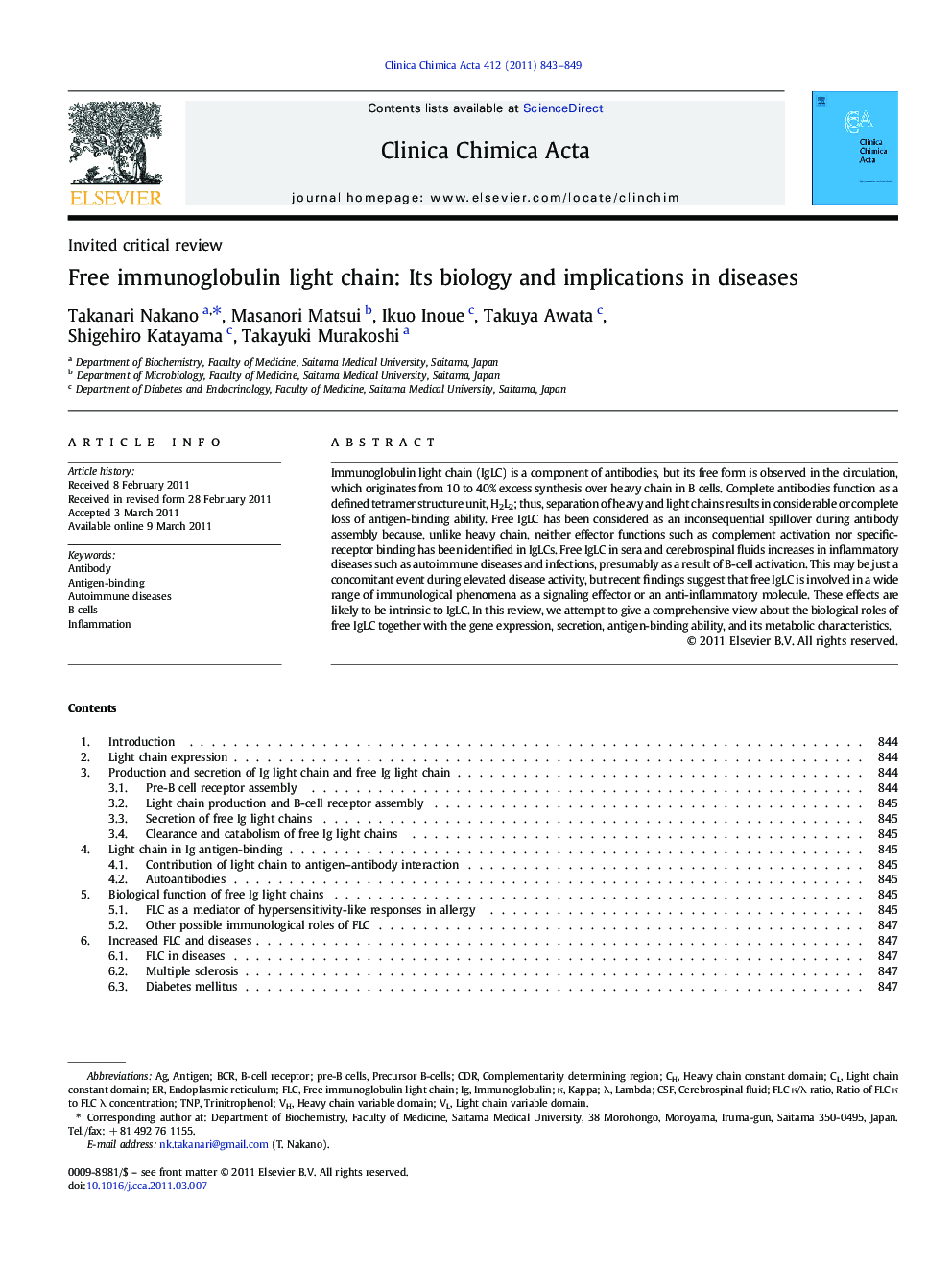| Article ID | Journal | Published Year | Pages | File Type |
|---|---|---|---|---|
| 8316556 | Clinica Chimica Acta | 2011 | 7 Pages |
Abstract
Immunoglobulin light chain (IgLC) is a component of antibodies, but its free form is observed in the circulation, which originates from 10 to 40% excess synthesis over heavy chain in B cells. Complete antibodies function as a defined tetramer structure unit, H2L2; thus, separation of heavy and light chains results in considerable or complete loss of antigen-binding ability. Free IgLC has been considered as an inconsequential spillover during antibody assembly because, unlike heavy chain, neither effector functions such as complement activation nor specific-receptor binding has been identified in IgLCs. Free IgLC in sera and cerebrospinal fluids increases in inflammatory diseases such as autoimmune diseases and infections, presumably as a result of B-cell activation. This may be just a concomitant event during elevated disease activity, but recent findings suggest that free IgLC is involved in a wide range of immunological phenomena as a signaling effector or an anti-inflammatory molecule. These effects are likely to be intrinsic to IgLC. In this review, we attempt to give a comprehensive view about the biological roles of free IgLC together with the gene expression, secretion, antigen-binding ability, and its metabolic characteristics.
Keywords
Related Topics
Life Sciences
Biochemistry, Genetics and Molecular Biology
Biochemistry
Authors
Takanari Nakano, Masanori Matsui, Ikuo Inoue, Takuya Awata, Shigehiro Katayama, Takayuki Murakoshi,
